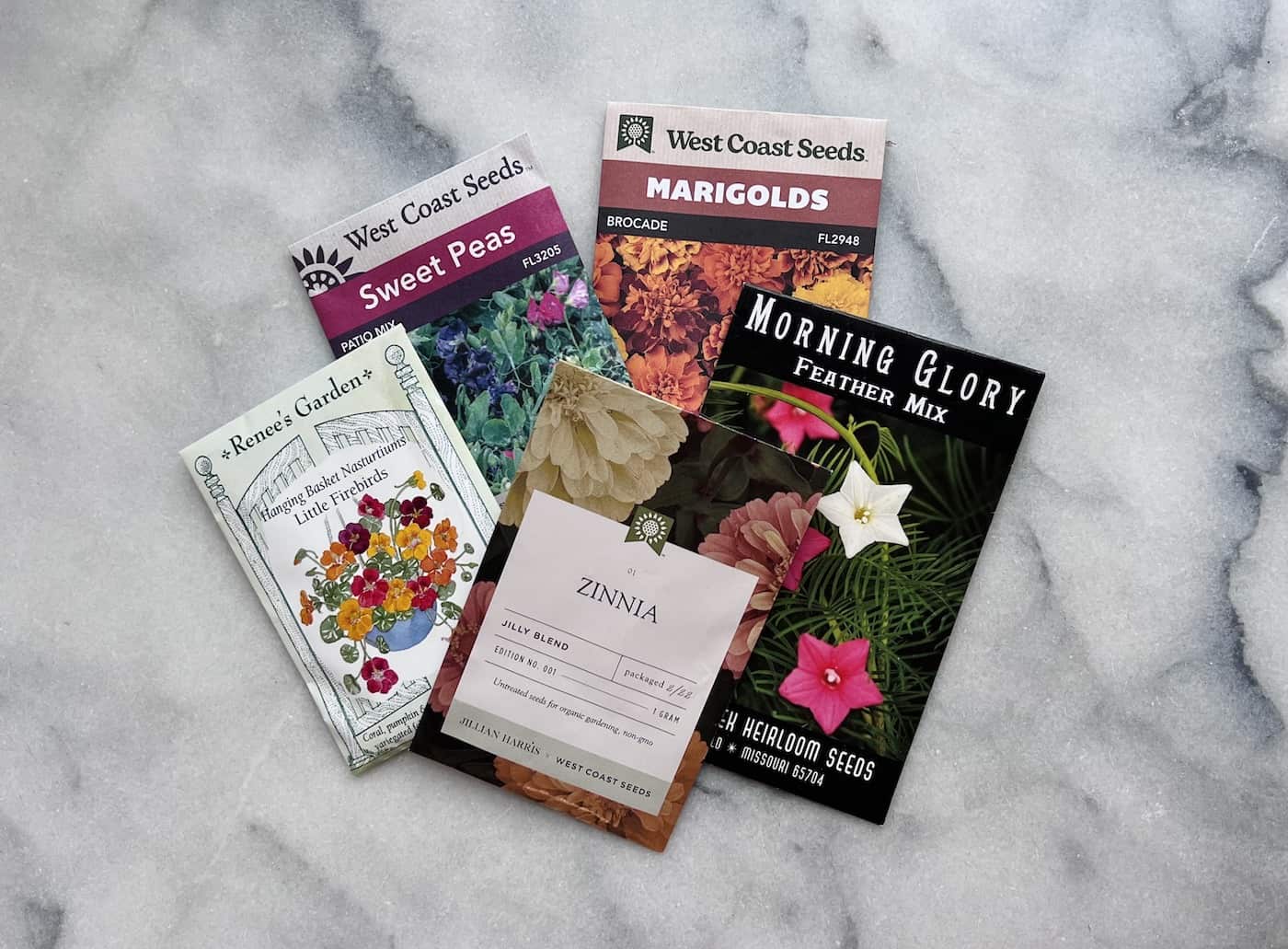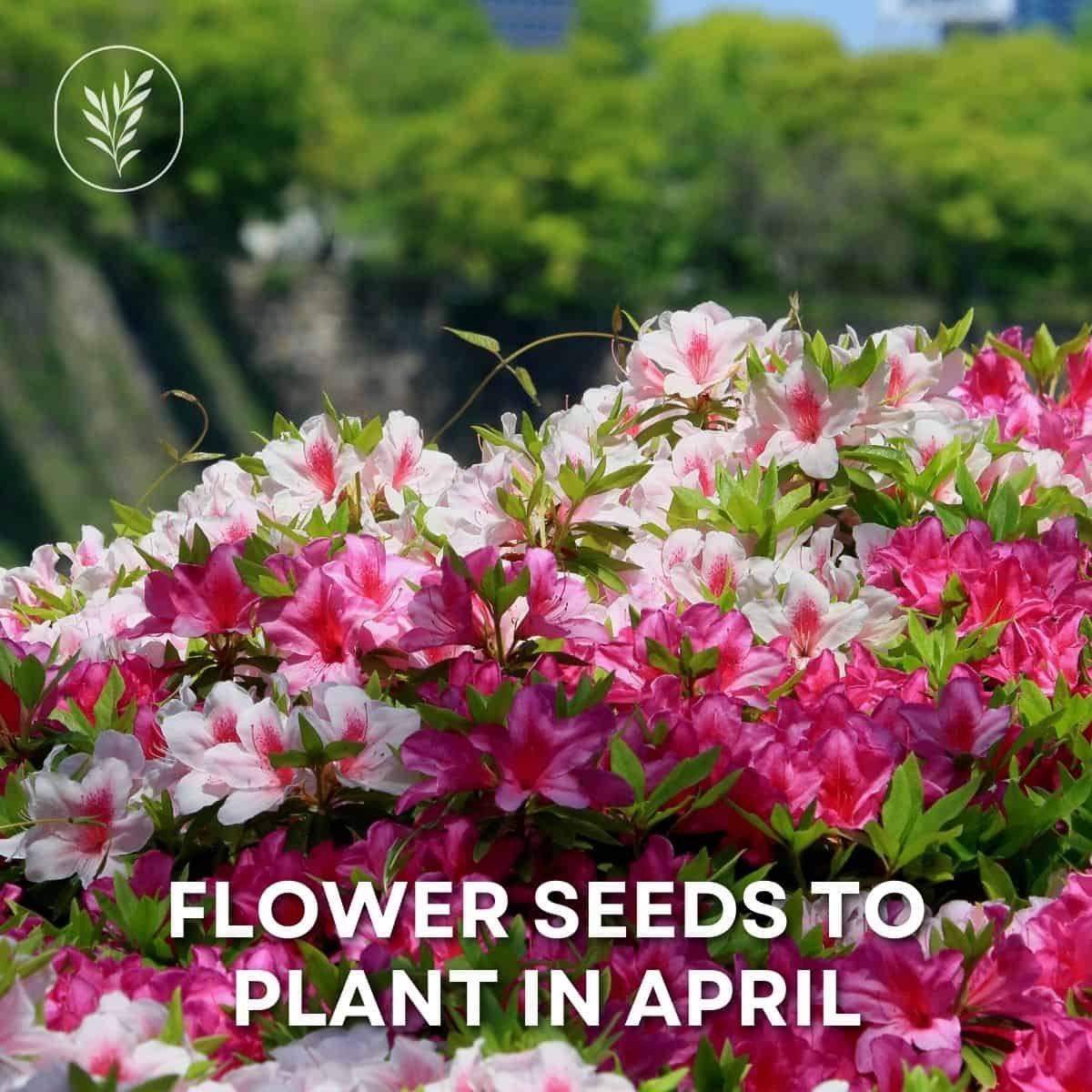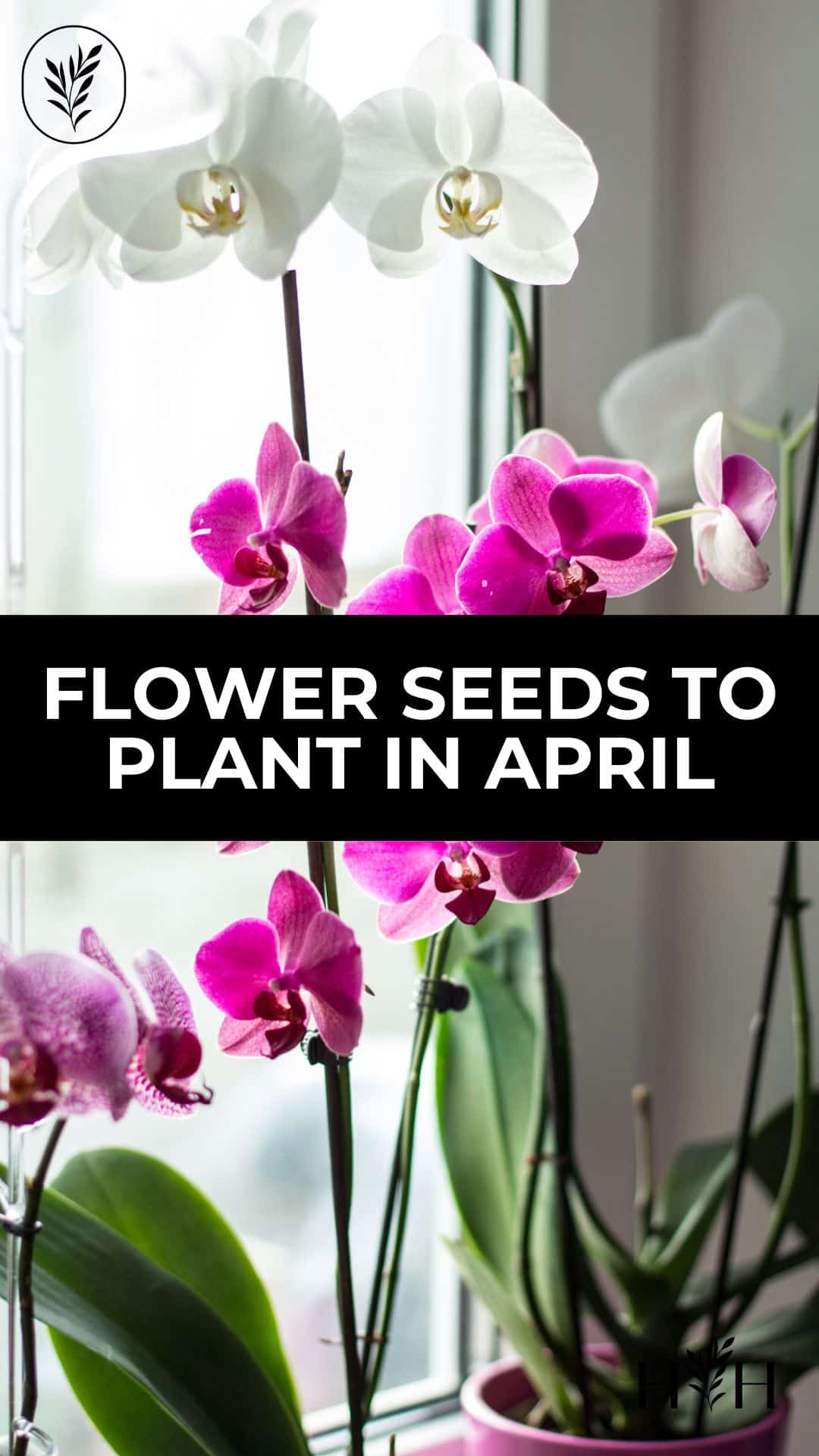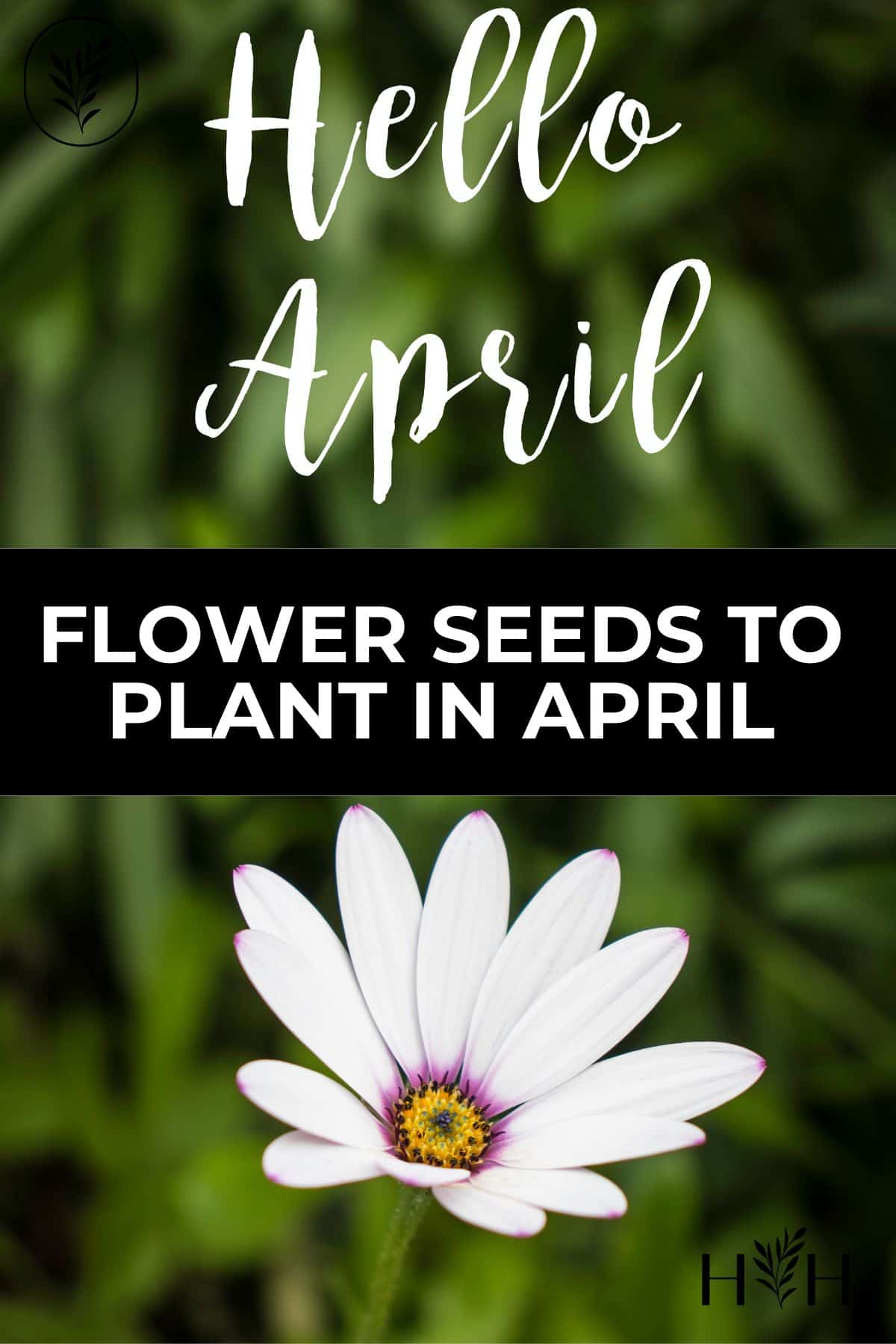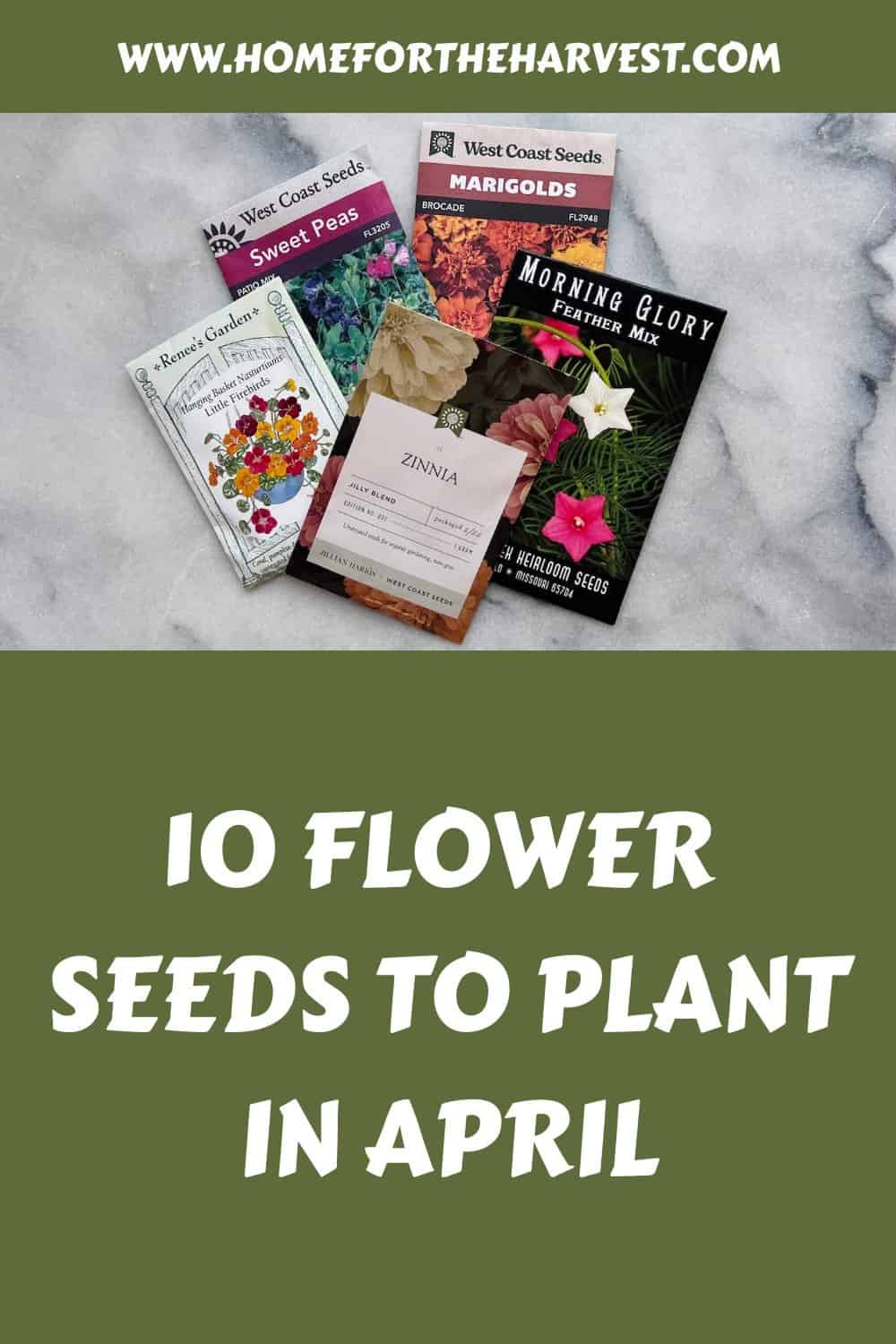Spring is the perfect time to plant! Here are some of the best flower seeds to plant in April. From marigolds to morning glories, zinnias to sunflowers, sweet peas to poppies – there’s something here for everyone. Get ready for a colorful display as you explore these beautiful blooms and discover why they’re ideal choices.
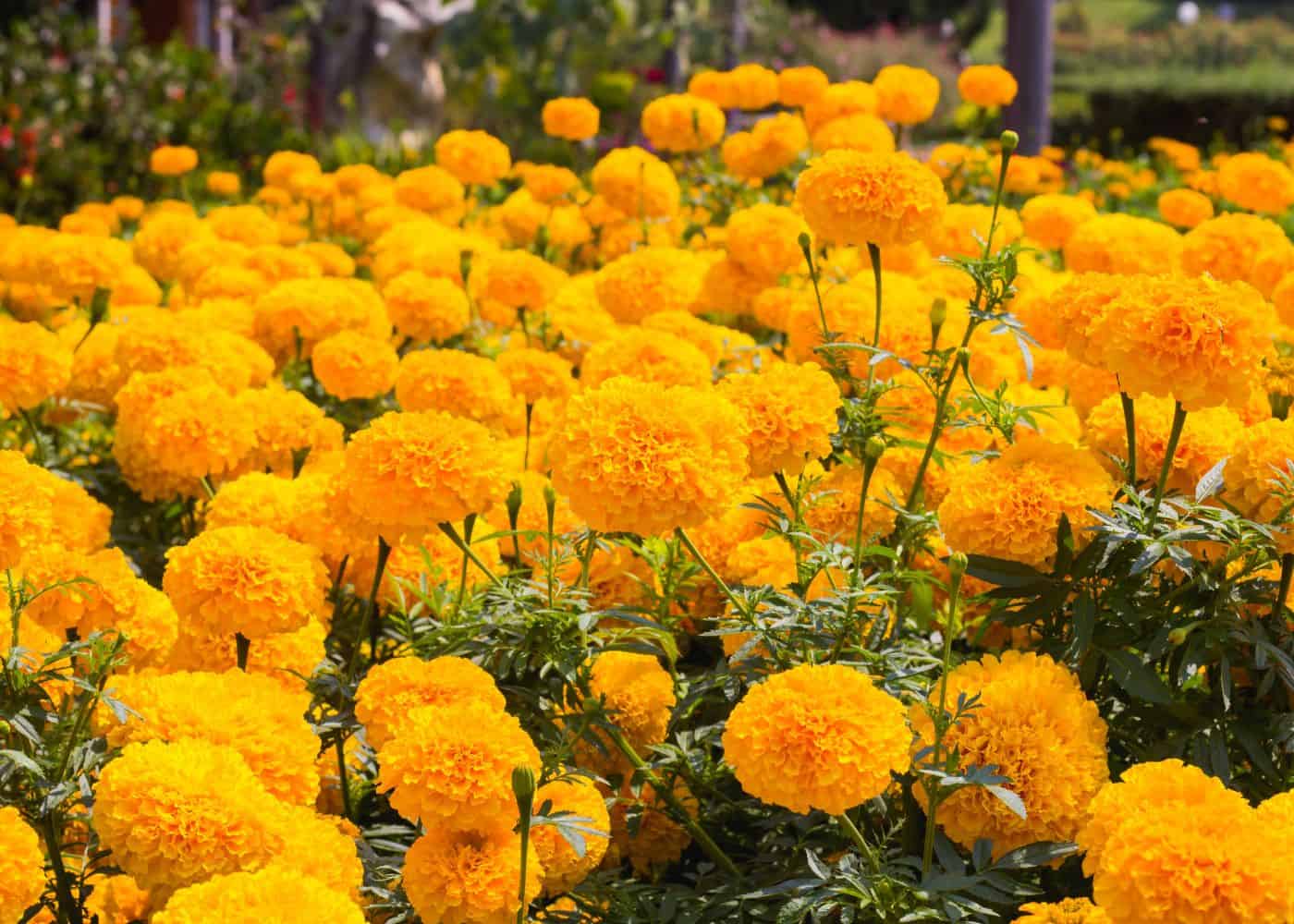
1. Marigold
Marigolds are a classic garden favorite for a good reason. They’re also easy to care for and don’t require much maintenance or expertise – making them perfect for novice gardeners.
Marigolds come in a range of sizes, from petite dwarf varieties to larger types that can reach up to two feet. The blooms range from vibrant oranges and yellows to deep reds and even purples – so you can find the perfect hue for your landscape design. Plus, marigold flowers attract pollinators like bees and butterflies, helping support local ecosystems while adding color.
If you want more bang for your buck (and who doesn’t?), consider planting multiple colors together in the same area – this will create a stunning visual effect when they bloom at different times throughout the season. When it comes time to water them during dry spells, just give them a drink every few days until the soil is damp but not soggy – over-watering can cause root rot which could kill off your beautiful blooms.
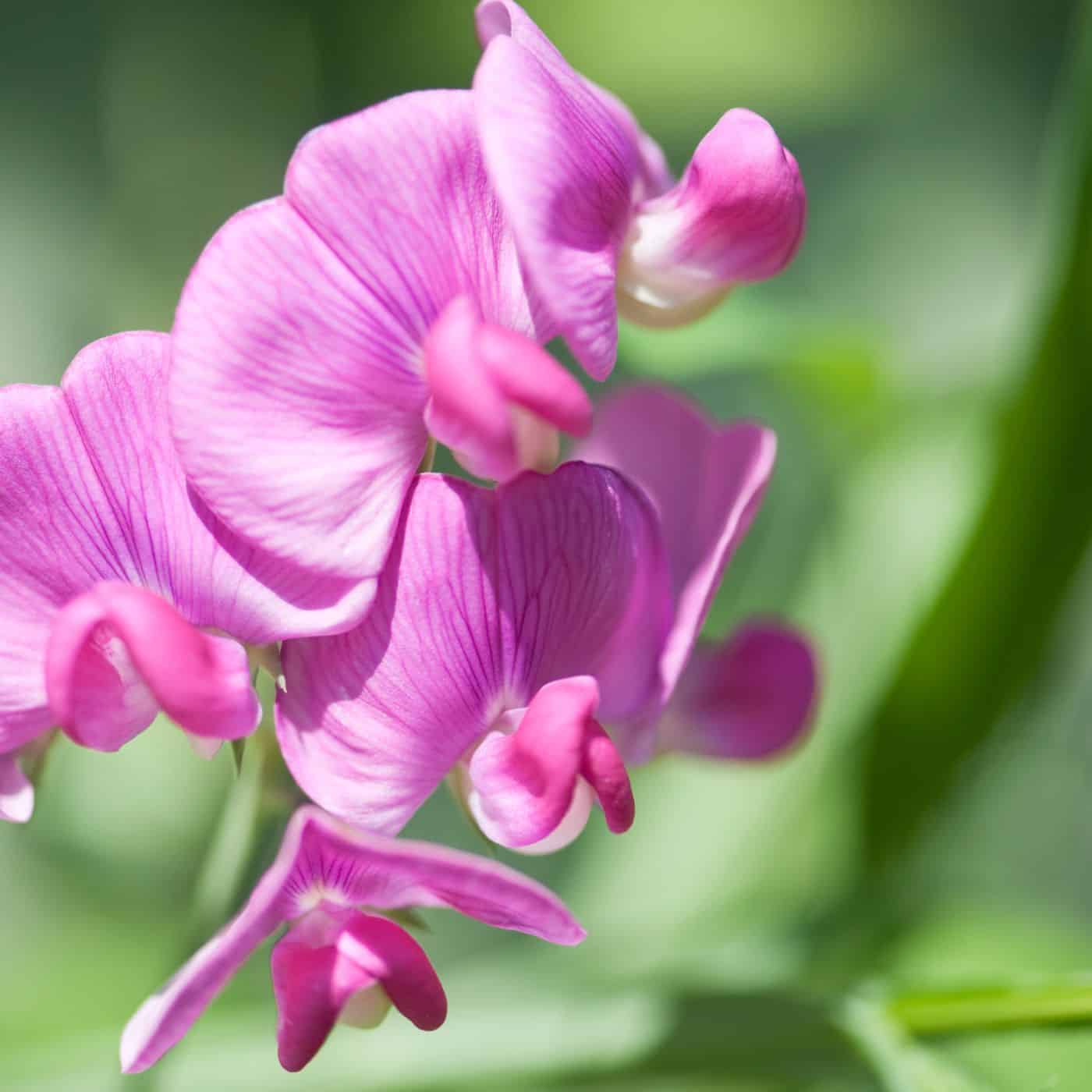
2. Sweet peas
With their range of hues, from delicate pastels to vibrant jewel tones, sweet peas can easily add a splash of color and texture. Sweet peas are easy to grow and require minimal care once established. With their fragrant scent and long-lasting blooms, sweet peas make an excellent addition to the garden.
Selecting the correct sweet pea variety for one’s locale is essential when planting. Some varieties do better in cooler temperatures, while others thrive in warmer climates. You should also plant them where they will receive at least six hours of sunlight per day for optimal growth and flowering potential.

3. Zinnia
Zinnias are a favorite among gardeners for their showy, colorful blooms and ease of care. Zinnias can be found in a range of sizes and shapes, from tiny daisy-like petals to large, impressive flowers. The best part about zinnias is that they’re incredibly easy to grow—all you need is some sun and well-drained soil.
When caring for zinnias, there isn’t much to do other than provide them with plenty of sunlight (at least 6 hours per day) and regular watering. To encourage more blooming throughout the season, you should deadhead spent flowers by cutting off the flower heads at their base when they start to fade away. This will help keep your zinnia patch looking vibrant all summer long.
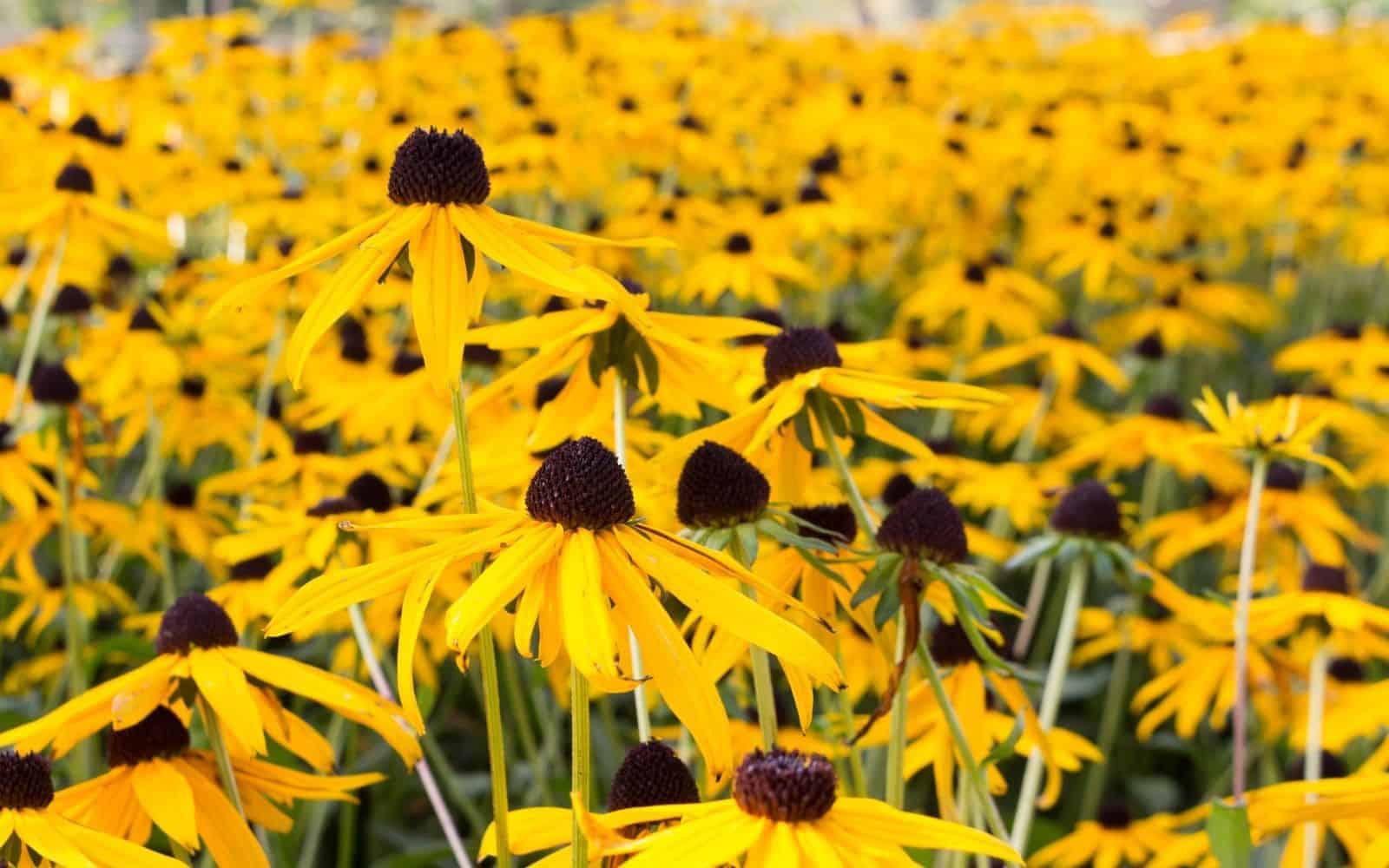
4. Rudbeckia
Rudbeckia is a beautiful, low-maintenance flower that adds color and texture to the late summer garden. It’s an ideal choice for North American homeowners who want to add some extra beauty without having to be plant experts. Rudbeckia is also known as black-eyed Susan or brown-eyed Susan, and comes in many varieties with different colors of petals and center cones.
The flowers are easy to grow from seed or plants, bloom all summer long, and attract butterflies and bees while providing food for birds during winter. They thrive in full sun but can tolerate partial shade as well as a wide range of soil types, including clay soils which makes them perfect for growing just about anywhere.
When planting rudbeckia, it’s important to give them plenty of room so they don’t get crowded out by other plants – each plant should have at least 12 inches between it and its neighbors so they can spread out nicely over time. The best way to keep them looking their best is by deadheading spent blooms throughout the season – this will encourage new growth and more flowers.
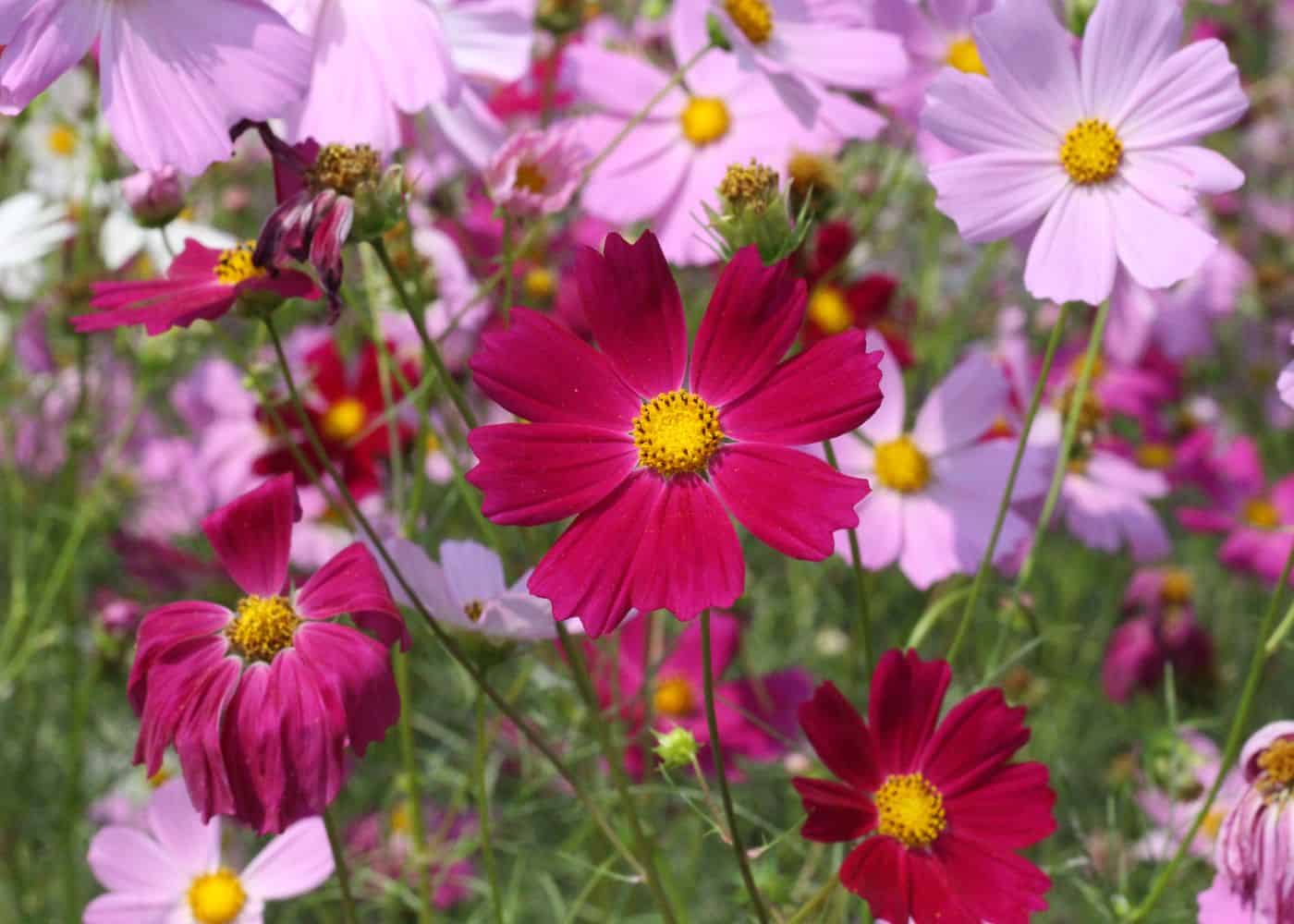
5. Cosmos
Cosmos is a cheerful, low-maintenance annual flower perfect for beginner gardeners. It produces daisy-like flowers in shades of pink, white, purple, and red on long stems with feathery foliage. This easy-to-grow plant will bring a splash of color to your garden beds or containers without much effort.
When planting cosmos, make sure you choose an area with full sun and well-drained soil; otherwise, it may become leggy or floppy from too much moisture and not enough sun. Sow or scatter the seeds at a depth of around 0.25 inches, and keep the soil moist until sprouting happens in 7-10 days. Once established, this hardy flower requires little maintenance beyond occasional deadheading to encourage new blooms throughout the season.
Cosmos is a multi-purpose marvel, not just an eye-catcher. You can include them in cut flower arrangements to spruce up any indoor setting; they make an ideal companion when you want to bring life and vibrancy along walkways with their nectar-rich petals attracting butterflies; or as part of container gardens for patios or balconies. And if that isn’t enough, the cherry on top – they are perfect temporary fillers among perennial beds providing much-needed color pop without needing too much attention.
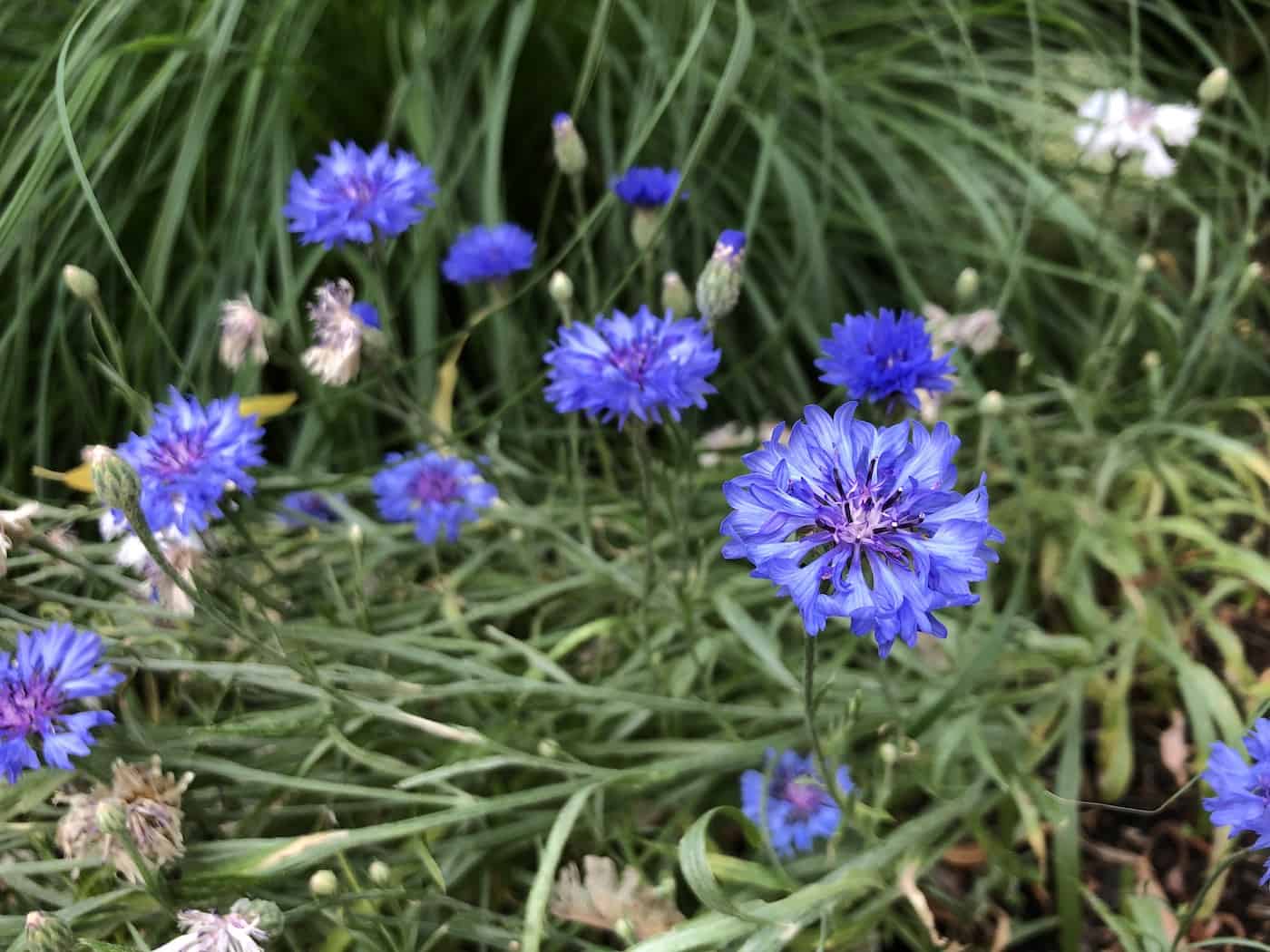
6. Cornflower
Cornflower is a lovely, enduring annual that’s easy to cultivate and adds vibrancy to any garden. It has daisy-like blooms with an array of colors, including blue, pink, white, and purple. The flowers are about 1 inch in diameter and have long stems that make them great for cutting or as a border plant.
Cornflowers can be grown from seed quite easily. They prefer full sun but will tolerate some shade. They require little maintenance other than occasional watering and deadheading spent blossoms to encourage more blooming throughout the season.
When it comes to soil requirements, cornflowers are not picky—they’ll do well in most types of soils as long as there is good drainage. Fertilization isn’t mandatory; however, if you’d like to have bigger blossoms, a bit of compost around the base can be added every couple of weeks during its growing season. To prevent disease problems, keep your cornflower bed free of weeds so air can circulate freely between plants and avoid overhead irrigation, which may spread diseases like powdery mildew or rust onto foliage and flowers alike.
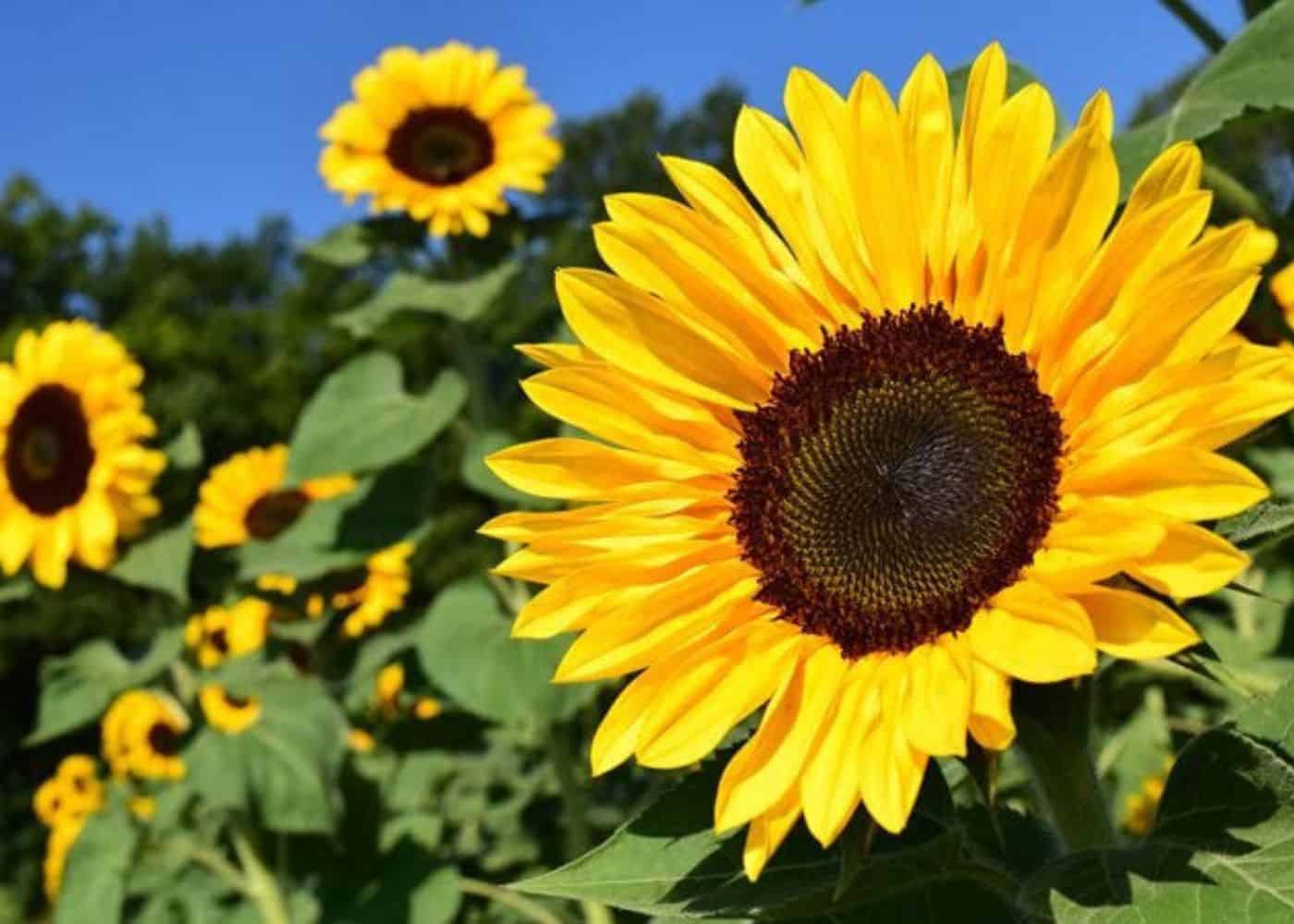
7. Sunflower
A classic and eye-catching plant, sunflowers bring a splash of vibrant yellow to any garden. With their bright yellow petals, they can be seen from miles away. They’re easy plants to grow and maintain, making them ideal for beginner gardeners or those looking for a low-maintenance flower bed.
Sunflowers come in many shapes and sizes, from the towering 8-footers to diminutive 2-foot varieties. All of these sunflower types have large, daisy-like flowers with multiple rows of ray florets surrounding the central disc florets. Sunflowers require full sunlight and well-drained soil; however, they are drought-tolerant once established. Fertilize your sunflower patch every spring before the blooming season begins, and water deeply during dry spells throughout the summer months.
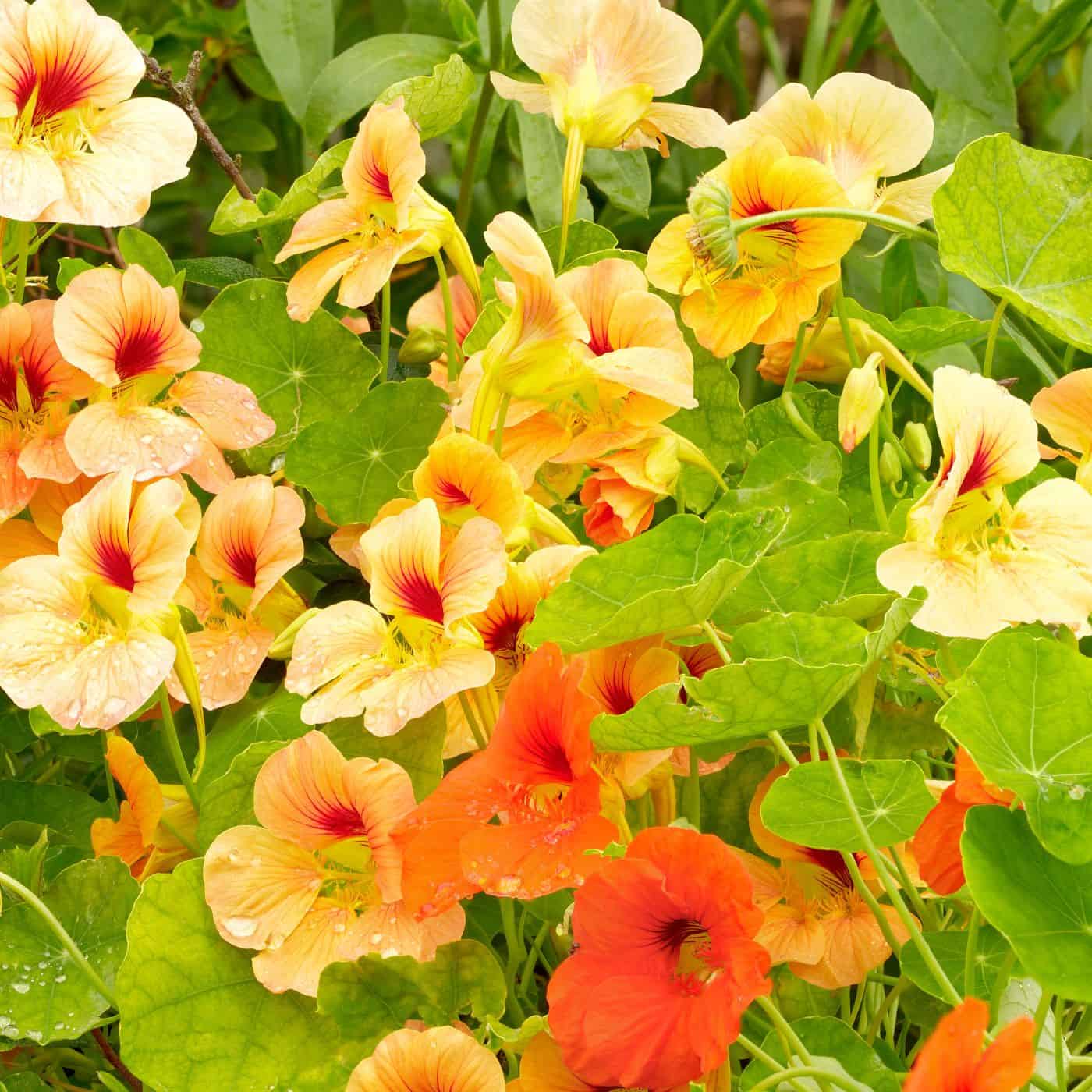
8. Nasturtium
Nasturtium, a flower that offers an eye-catching splash of warm color, is simple to cultivate. With its bright orange, yellow and red blooms, it’s no wonder why nasturtium is one of the most popular plants among home gardeners.
Not only are they beautiful, but they’re also low maintenance and require minimal care. Nasturtiums thrive in full sun and can tolerate dry conditions, making them ideal for busy homeowners who don’t have time for daily watering or fertilizing.
Select a site with soil that facilitates drainage to avoid root decay from too much moisture when planting nasturtiums. Start your nasturtiums indoors eight weeks before the last frost if you’re in a chillier region to get a jump on the growing season. Once planted outdoors, water regularly until established, let nature take its course – these hardy plants will usually do just fine without additional TLC beyond the occasional watering.
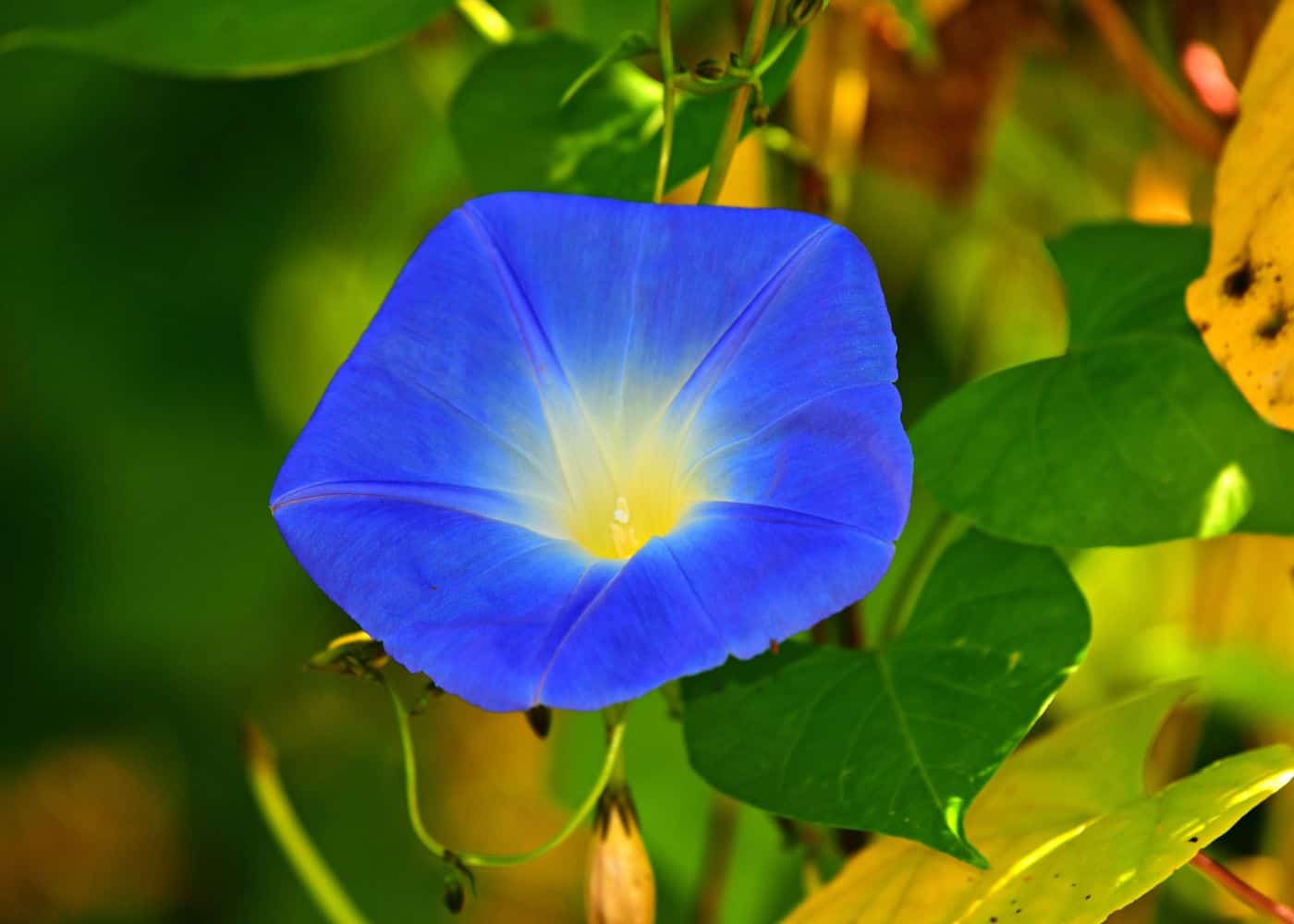
9. Morning glory
Morning glory is a beautiful flower that can add a splash of vibrant color. It’s a breeze to cultivate and sustain, making it the perfect selection for novice gardeners or those with limited time for more complex gardening tasks. With its delicate trumpet-shaped blooms in shades of blue, purple, pink, and white, morning glories are sure to make your yard stand out from the rest.
These flowers thrive best in full sun but will also tolerate partial shade. Soil with plenty of organic matter should be used, enabling good drainage and allowing for deep but infrequent watering; too much H2O can lead to root rot. Watering should be done deeply and infrequently; too much water can cause root rot and other problems. Morning glories require minimal fertilization—just enough to keep them healthy without overfeeding them—and they do not need pruning or deadheading unless you want to encourage additional blooming throughout the season.
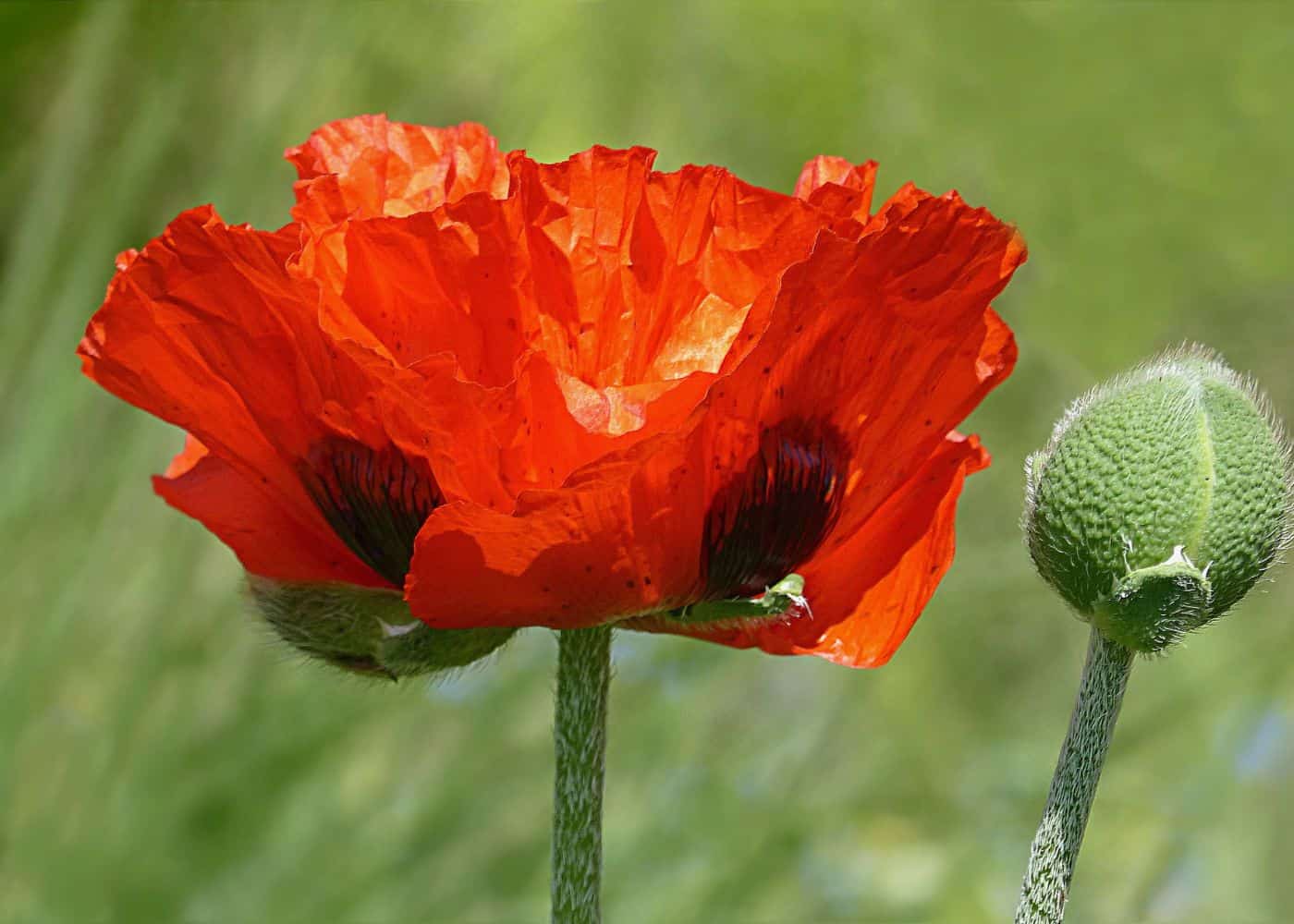
10. Poppy
Poppies are a classic flower that has been around for centuries. With their vibrant colors and delicate petals, they can bring life to any garden or landscape. Poppies are available in a range of hues, from scarlet and rose to tangerine, lemon, and ivory, both one-season bloomers and perennials.
Poppies are easy to grow as long as you provide them with the right conditions: plenty of sun, well-drained soil, and regular watering. If you’re seeking to make your garden more vibrant, poppies could be the ideal choice.
When planting poppies, ensuring they get enough sunlight to thrive is important. Aim to provide poppies with at least six hours of direct sunlight daily, although some types may do fine with four or five. Ensure the soil remains moist but not waterlogged, as excess moisture can lead to root rot and thus kill your poppies. Make sure your soil drains well by adding compost or other organic matter before planting your seeds or seedlings.
FAQs about flower seeds to plant in April
What flower seeds can I plant in April?
April is a great time to plant many types of flower seeds. Depending on your climate, some popular choices are cosmos, poppies, bachelor’s buttons, sunflowers, calendula, and sweet peas. Consider planting them in an area that gets plenty of sunlight for optimal growth. Planting in well-draining soil will also help ensure the flowers thrive throughout the season.
Is it too late to plant flower seeds in April?
It is not too late to plant flower seeds in April. Depending on the type of flower and your climate, you can often have success planting as late as mid-April. Flower seedlings are typically very resilient and will typically germinate quickly when planted in warm enough soil for growth. You can still establish a thriving garden with the right conditions before summer arrives.
Is April a good time to plant seeds?
April is usually a great time to plant seeds. April offers mild temperatures and plenty of sunlight, making it a great month for planting seeds outdoors.
Depending on your climate and the type of plants you are growing, some may do better planted later in spring or early summer. It’s important to check with your local gardening extension or online resources for specific planting dates based on your location and types of plants.
Before you go…
Planting marigolds, sweet peas, zinnias, rudbeckia, cosmos, cornflowers, sunflowers, nasturtiums, morning glories, and poppies will bring beauty and color to your outdoor space. With careful planning, you can create an array of vibrant blooms throughout spring into summer that will be sure to impress. So don’t wait any longer – take advantage of April’s favorable weather conditions by planting these flower seeds now so you can enjoy them in all their glory later this year.
Resources
- Planting a perfect perimeter of herbaceous perennial flowers
- How to start a flower bed for beginner gardeners
- When to plant flowers
References
- Ziegler, L. M. (2018). Vegetables Love Flowers. Cool Springs Press.
Need more info?
Are you interested in learning more about the flower seeds to plant in April? Here are our best articles about it!


